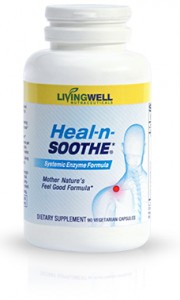Syringomyelia is one of those rare back pain conditions many have never heard of.
Only around 40,000 Americans are known to have it. Yet if you’ve been diagnosed with syringomyelia you already understand its potentially devastating effects.
Recently I received a letter from Barbara who has suffered with the condition for years. She wrote of the pain and other effects syringomyelia causes:
“Syringomyelia (SM) is a Neurological condition that affects many parts of the body. A cyst forms inside the Spinal Cord and slows the spinal fluid down to where it does not flow properly. There are secondary side effects of SM which are nearly just as painful… Scoliosis, Spondylitis, paralysis, palsy, and many more. Little is known about the disease and mine was caused by trauma and I have suffered beyond belief for over six years now.”
I’ll share how Barbara was able to almost completely wean herself off morphine(!) for her pain in a moment, but first let me explain what we know about the condition.
What Is Syringomyelia?
While there are two significant types of syringomyelia, both are characterized by the formation of an expanding cyst, called a syrinx, inside the spinal cord itself.
As the cyst expands, it first compresses the nerves in that area of the spinal cord causing pain and other dysfunction beginning with weakness, numbness and impairment of temperature sensitivity.
Over time, the syrinx may permanently damage and even completely destroy the spinal cord with severe consequences including loss of bladder and bowel control, sexual dysfunction and even paralysis.
What Causes Syringomyelia?
The first major form of syringomyelia is called communicating syringomyelia. Associated with an anatomical brain abnormality called a Chiari I malformation, the lower part of the cerebellum protrudes from the head into the cervical (neck) part of the spinal canal allowing a cerebrospinal fluid (CSF) filled syrinx to develop in the cervical area.
Symptoms of communicating syringomyelia often appear in early to mid-adulthood and may be accompanied by hydrocephalus (an accumulation of CSF in the brain) or arachnoiditis (inflammation of the spinal cord membrane).
The second major form, noncommunicating syringomyelia, follows some form of trauma to the spinal cord that affects the movement of CSF through the area, prompting cyst growth. Trauma may be a direct injury or an side effect of another condition such as meningitis, hemorrhage, tumor or arachnoiditis.
Treatments for Syringomyelia
Standard treatment for syringomyelia typically involves some type of surgery. The surgery performed depends on the location and form of syrinx.
Often surgery involves placing a shunt to drain CSF filling the syrinx (or accumulating on the brain) into the abdomen. When the cause of syringomyelia is a tumor, removal by surgery is usually the preferred option.
Syringomyelia is one of the few conditions doctors actually agree with us that drugs are of little or no value, other than the pills they prescribe to deal with the pain.
Since any surgery around the brain or spinal cord carries tremendous risk and drugs don’t help, we’ve received letters asking what else we can do about the condition.
A Natural Alternative Treatment for Syringomyelia
While syringomyelia remains largely a mystery to the medical community, we do know fibrosis (internal scar tissue) is associated with the formation of many types of cysts.
Breaking down the excess fibrin behind fibrosis is the job of proteolytic enzymes throughout your body. Your pancreas makes these enzymes naturally but the amount of enzymes made declines rapidly by your late 20s. Which just so happens to coincide with the typical onset of symptoms of those with communicating syringomyelia (not to mention the lengthening of recovery time from injuries in general).
In the case of noncommunicating syringomyelia, fibrosis likely plays a role in cyst formation due to the body’s natural response to any injury – flooding the area with white blood cells, instigating inflammation and laying down layers of protein-based fibrin to repair the injured area.
That’s why we weren’t completely surprised by Barbara’s letter. Here’s what she did:
“I take 6 Heal-n-Soothe® a day in place of the Morphine. I still take one Morphine a day but look forward to only taking the Heal-n-Soothe®. The side effects of Morphine are not good, whereas the side effects of Heal-n-Soothe® do not exist.”
If you’re not familiar with Heal-n-Soothe®, it’s our leading supplement which combines high doses of proteolytic enzymes with a dozen powerful natural anti-inflammatories. We get reports all the time from around the world of individuals tossing their pain pills in the trash in favor of this much safer, natural alternative.
Of course, since the proteolytic enzymes and other ingredients support a natural process rather than chemically hide pain, it may take a little longer to get full results and you need to take it consistently. Barbara knew this and benefitted as a result:
“I highly recommend the Heal-n-Soothe® for those who are suffering chronic pain. As with all natural products, you must give it time to work and not just take it for a short time and give up on it. My Neurologist has encouraged me to take it, as well. I am not afraid of ending up in a wheelchair with the SM because of the Heal-n-Soothe®, I believe it will gradually heal my spinal cord and to just be relieved of the horrible pain is so wonderful.”
Heal-n-Soothe® is so much safer than drugs you have nothing to lose giving it a try.
And unlike drugs, our supplement is guaranteed to work for your pain or your money back.
Isn’t it time you gave Heal-n-Soothe® a try?
References
Syringomyelia Fact Sheet. National Institute of Neurological Disorders and Stroke. 2014 Apr 16.




Thanks,but not satisfied about sryngomeliya treatment
Please explain your comment further. I was dx’ed with SM 2 years ago.